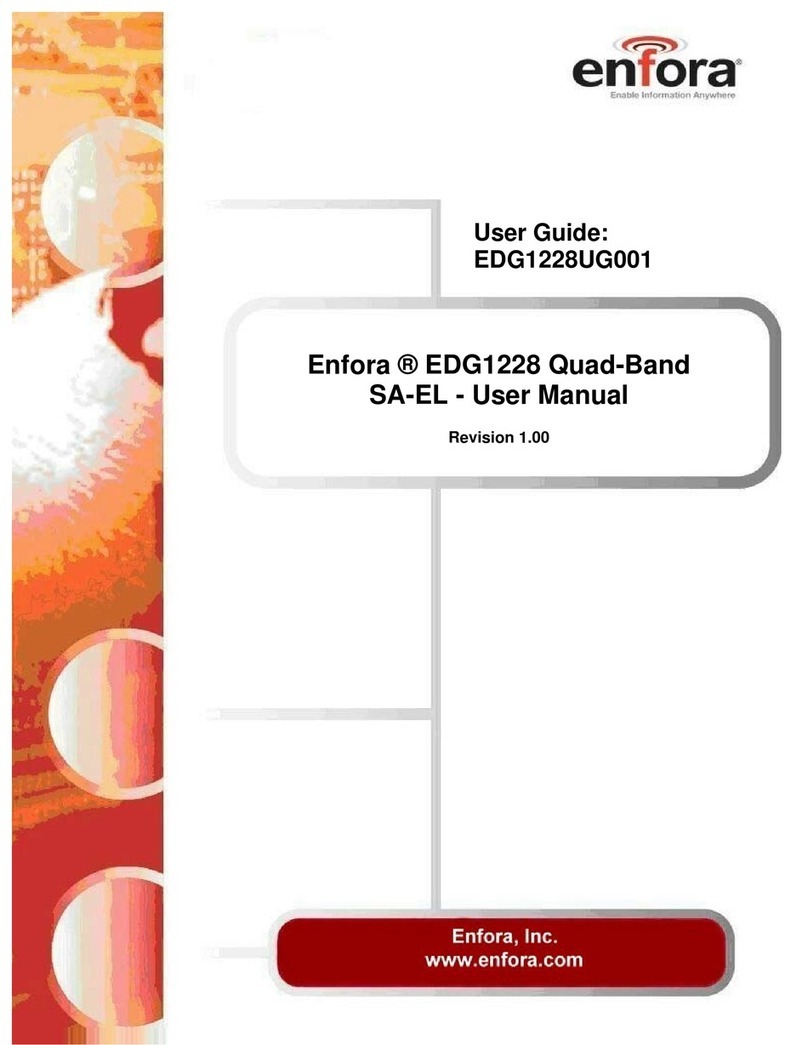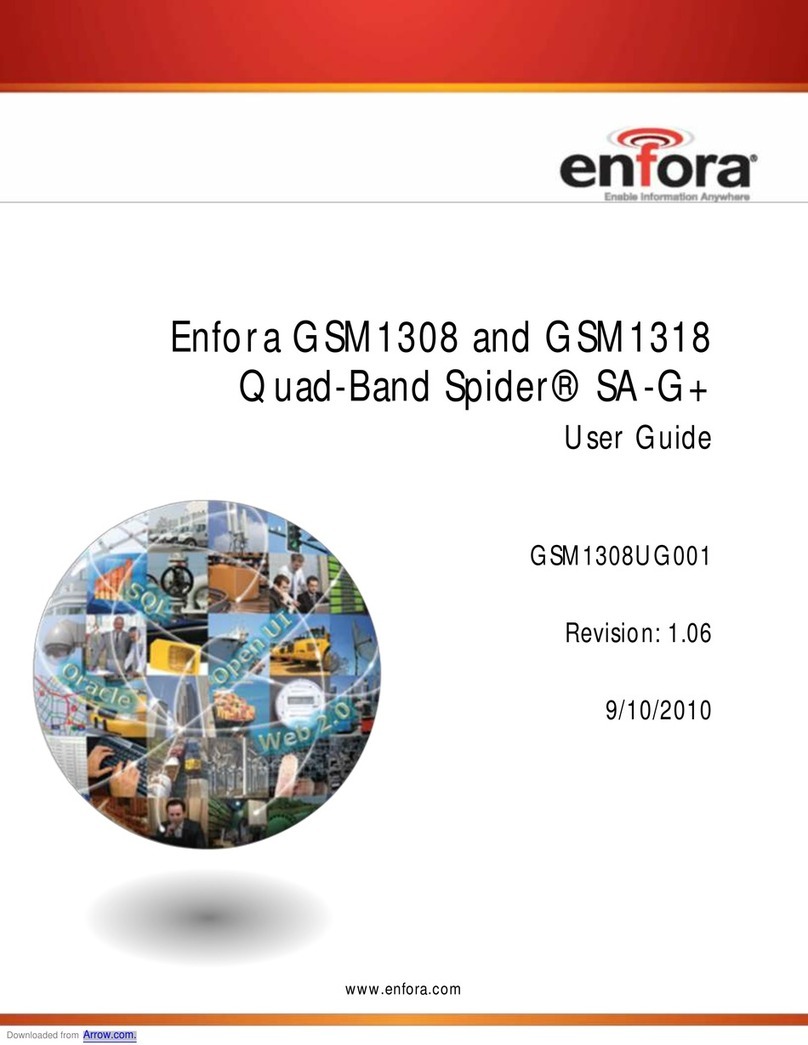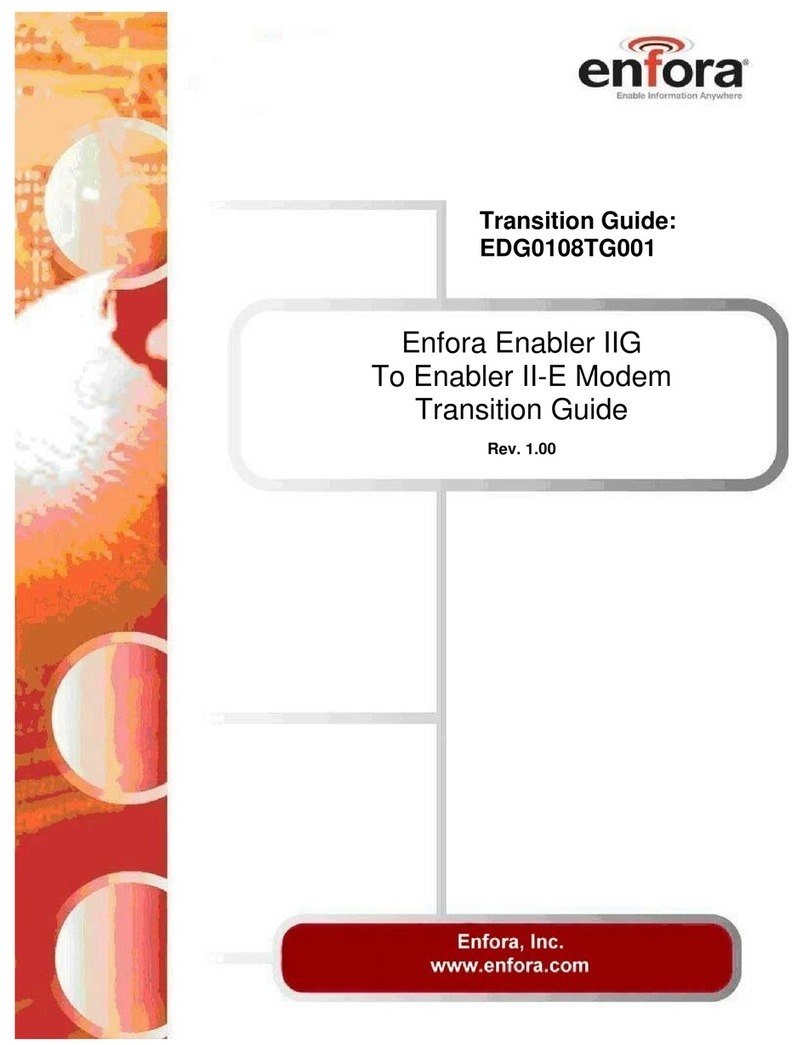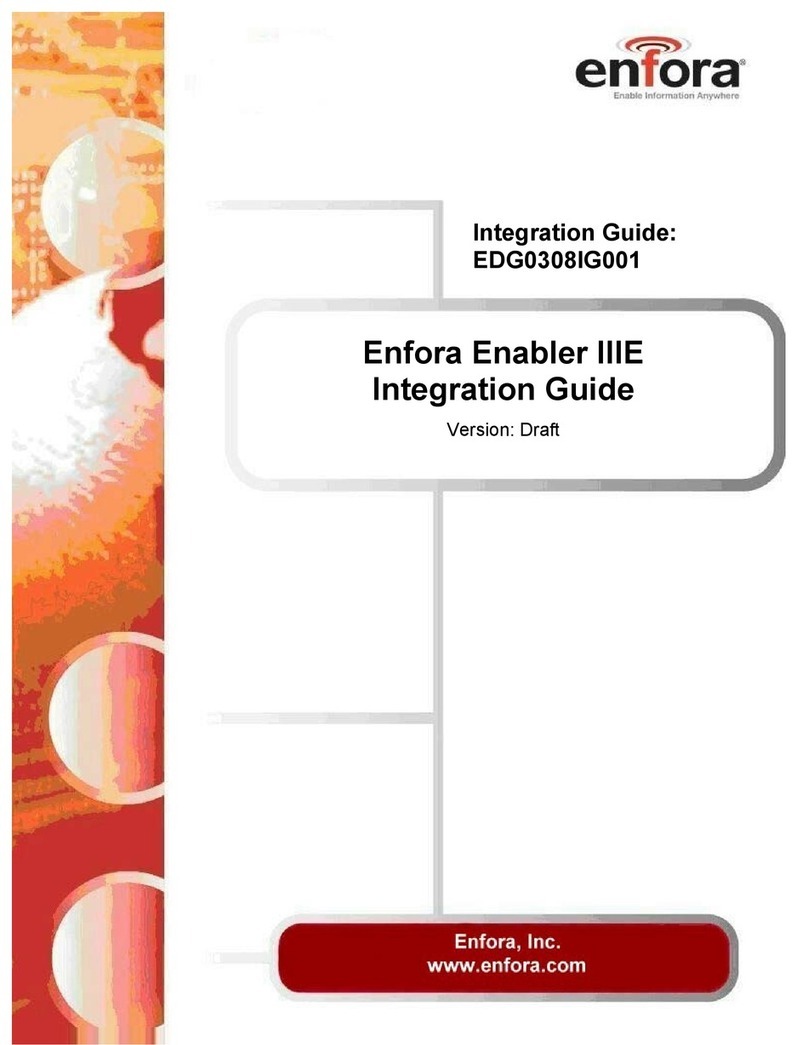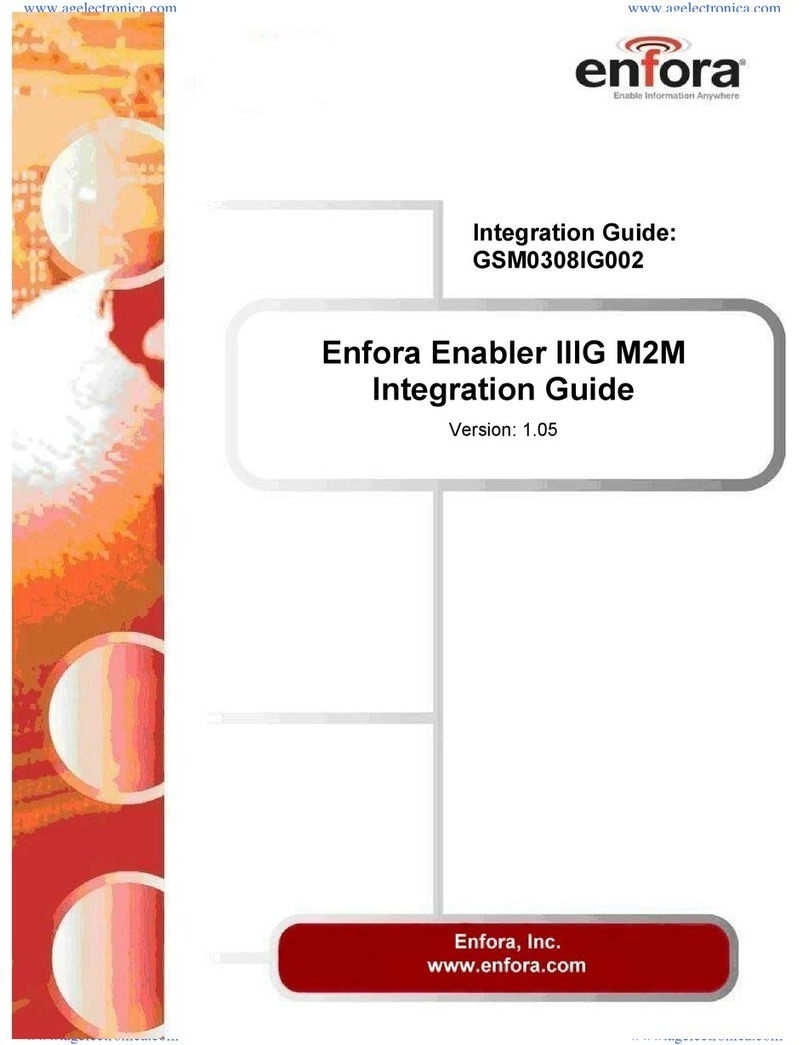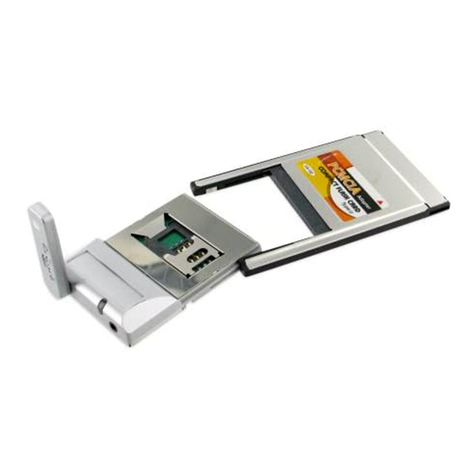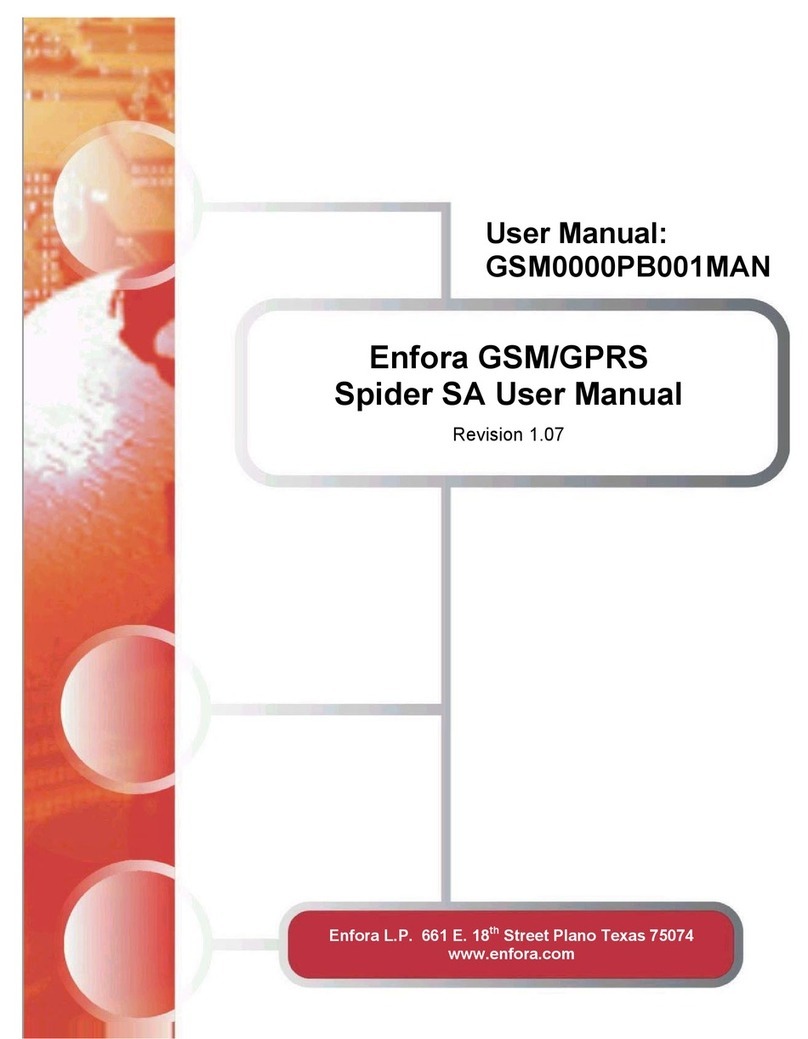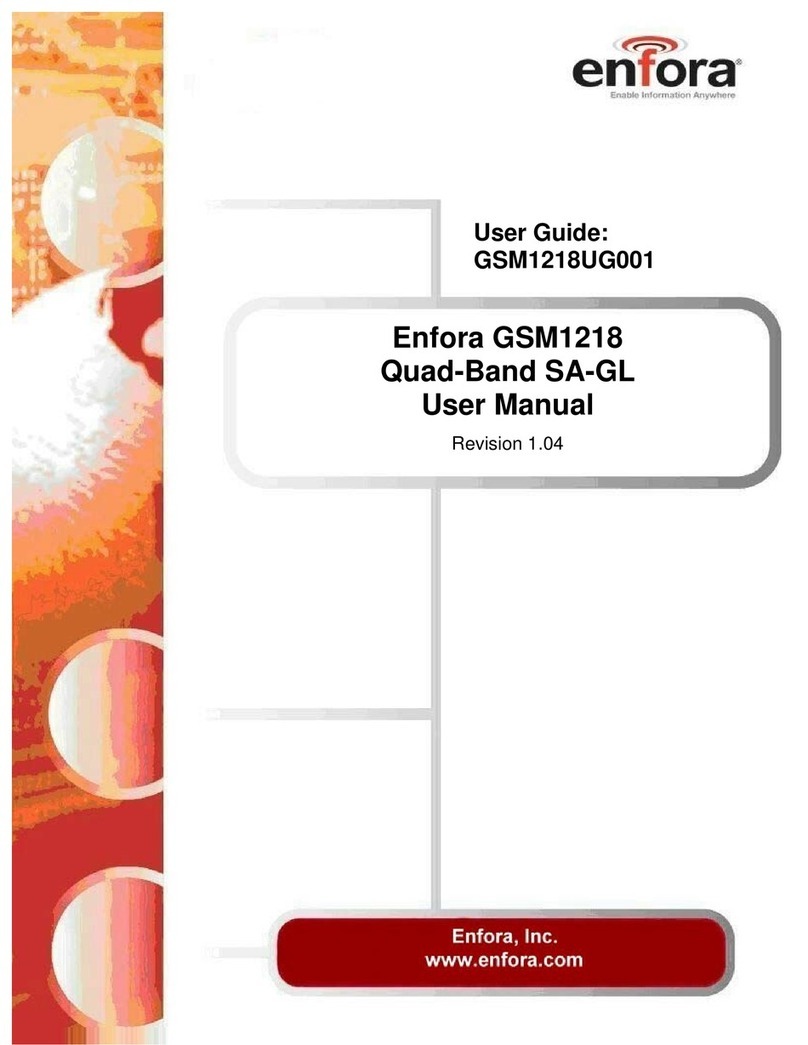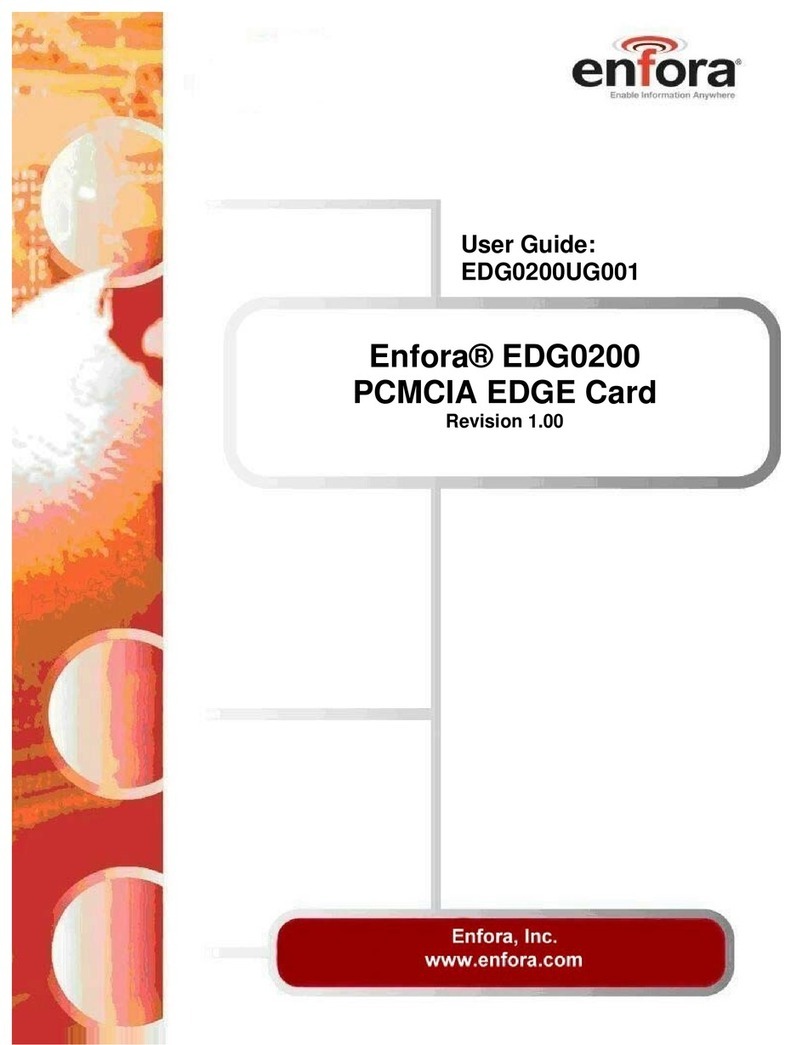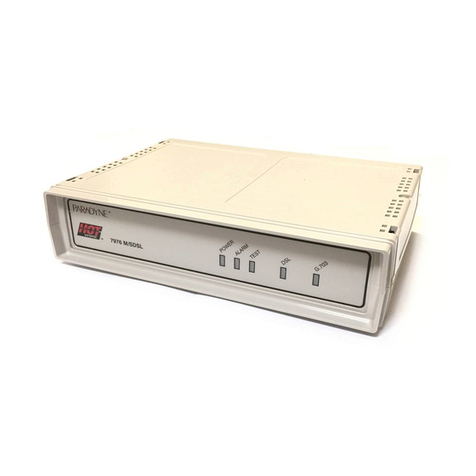
Enfora Enabler III-G
Modem Integration Guide
6.6. CONTROL CONNECTOR SIGNAL DESCRIPTIONS AND FUNCTIONS .................................................................31
6.6.1. Module Power (Pins 85, 87, 79, 91, 93, 95, 97, 99)............................................................................31
6.6.2. Ring Indicate........................................................................................................................................31
6.6.3. Using the Power Control Signal..........................................................................................................32
6.6.4. Level Translation Reference Power (Pin 77).......................................................................................37
6.6.5. USB (Pins 1, 3, 5, 7, 9) ........................................................................................................................37
6.6.6. LED A (Pin 8) & B (Pin 6), VRWLED (Pin 10)...................................................................................39
6.6.7. LED VRW (Pin 10) ..............................................................................................................................41
6.6.8. General Purpose Input/Output Interface.............................................................................................42
6.6.9. Power Control (Pin 35) .......................................................................................................................43
6.6.10. RTC Sleep ............................................................................................................................................43
6.6.11. Serial Interfaces & Handshake (Pins 11, 13, 15, 17, 19, 21, 23, 25)...................................................43
6.6.12. MCSI – Multi-Channel Serial Interface (Pins 12, 14, 16, 18) .............................................................44
6.6.13. I2C (Pins 48, 50) ..................................................................................................................................45
6.6.14. Serial Port Interface (SPI) (Pins 20, 22, 24, 26, 28, 30)......................................................................46
6.6.15. Keyboard (Pins 27, 29, 31, 32, 33, 34, 36, 38, 40, 42 ) .......................................................................47
6.6.16. VBACKUP Input (Pin 83).........................................................................................................................48
6.6.17. Using VBAK.........................................................................................................................................49
6.6.18. 32 kHz output (Pin 56).........................................................................................................................49
6.6.19. 13 MHz output (Pin 52).......................................................................................................................49
6.6.20. Analog-To-Digital Input (Pin 74)........................................................................................................50
6.6.21. Handset Microphone Input (Pins 65, 67).............................................................................................50
6.6.22. Handset Microphone Bias Output (Pin 63) .........................................................................................50
6.6.23. Handset Speaker Output (Pins 71, 73).................................................................................................51
6.6.24. Headset Microphone Input (Pin 55) ....................................................................................................52
6.6.25. Headset Microphone Bias Output (Pin 53)..........................................................................................52
6.6.26. Headset Speaker Output Left & Right (Pins 57, 59)............................................................................53
6.6.27. Headset Output Common Mode (Pin 61).............................................................................................53
6.6.28. Headset Detect (Pin 47).......................................................................................................................54
6.6.29. Audio Mixer input (Pins 49, 56) ..........................................................................................................55
6.7. SUBSCRIBER IDENTITY MODULE (SIM) CARRIER ........................................................................................56
6.7.1. SIM Integration for the Enfora Enabler III-G Module........................................................................56
6.7.2. Using a Remote SIM with the Enfora Enabler III-G Module (Pins 76, 78, 80, 82, 84).......................56
7. GSM/GPRS MODES OF OPERATION.........................................................................................................59
7.1. ENABLING THE TRANSMISSION MODES FOR THE GSM/GPRS SERVICES .....................................................59
7.2. VOICE COMMUNICATION..............................................................................................................................59
7.3. CIRCUIT-SWITCHED DATA ...........................................................................................................................59
7.4. SMS: SHORT MESSAGE SERVICES................................................................................................................60
8. SIM OPERATION ............................................................................................................................................61
8.1. PROVISIONING THE SIM ...............................................................................................................................61
8.2. GSM SERVICES SUPPORTED BY THE ENFORA ENABLER III-G MODULE ......................................................61
8.3. GPRS SERVICES SUPPORTED BY THE ENFORA ENABLER III-G MODULE.....................................................61
8.4. SELECTING THE GSM MODES OF OPERATION..............................................................................................62
9. SOFTWARE INTERFACE..............................................................................................................................63
9.1. SOFTWARE INTERFACE.................................................................................................................................63
9.2. FORMAT FOR THE AT COMMANDS ...............................................................................................................64
9.3. ENFORA AT COMMAND SET ........................................................................................................................65
9.4. ENFORA PACKET APPLICATION PROGRAMMING INTERFACE ........................................................................65
9.4.1. UDP-API Architecture.........................................................................................................................65
9.5. ENFORA MODEM CONTROL LIBRARY ARCHITECTURE .................................................................................67
9.5.1. Using Port Library ..............................................................................................................................68
9.5.2. Using Messaging Library ....................................................................................................................68
GSM0308PB001 Version DRAFT – 2/9/2007





